![Study - How to Write the Best Physician Profiles [New Data] Study - How to Write the Best Physician Profiles [New Data]](/uploads/news-pictures/404-silver-spring-blog-post-image-20191108104414.png)
Think beyond medical specialties and office locations: Your physician bios can be an integral part of your healthcare marketing strategy and even bring in new patients — if you do them right.
As a healthcare marketer, you should craft a smart and efficient physician bio strategy by figuring out what patients want.
Which is … what, exactly?
At Aha Media, we work with providers every day to write outstanding doctor profiles. We have a pretty good handle on what to write, but we knew it was time to dig deeper. We needed objective data that would tell us exactly what patients want to see from physician bios.
So, we pursued the challenge with a survey of 570 consumers — men and women between the ages of 18 to 70+. Below is our analysis on:
During our webinar on Oct. 24, we learned that three-quarters of attendees invest in writing/creating physician profiles. That’s a wise investment — because our survey results found that patients DO seek information about a physician before making an appointment. 75% of survey respondents said they read a doctor’s profile before scheduling.
75% of people read a doctor's profile before scheduling an appointment, & 70% of them are under age 71. #hcmktg CLICK TO TWEET
But where patients find physician information is another story:
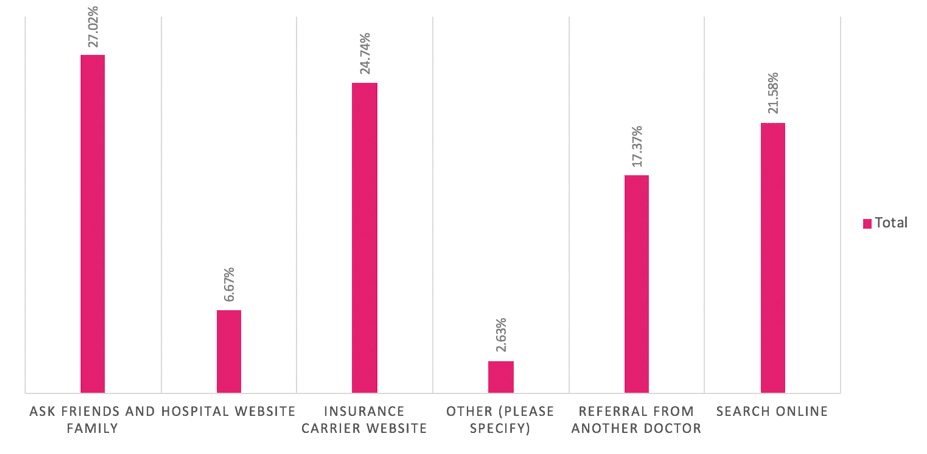
Who is most likely to search your hospital website for a doctor depends on gender, age AND education, our research found.
Individuals with higher levels of education seem to rely on physician bios more than the less educated. Almost all education levels (less than a high school diploma through Doctorate) are at least 60% likely to read a physician bio before an appointment. But that likelihood increases to more than 80% for master’s degrees and more than 90% for doctorates.
The higher a person's level of education, the more likely they are to seek out physician profiles, says new research. #hcmktg CLICK TO TWEET
Women are more likely than men to seek out physician bios and make healthcare decisions on their own. Men are more likely to make those decisions in partnership with a loved one or spouse.
Ready to take your physician profiles to the next level? Here’s the recipe for the best bios:
These are the three details people care about the most:
People care most about these 3 details when choosing a doctor: His/her experience, education, & accepted insurance providers. CLICK TO TWEET
What DON’T patients really care about? Last on the list of preferences were the physician’s:
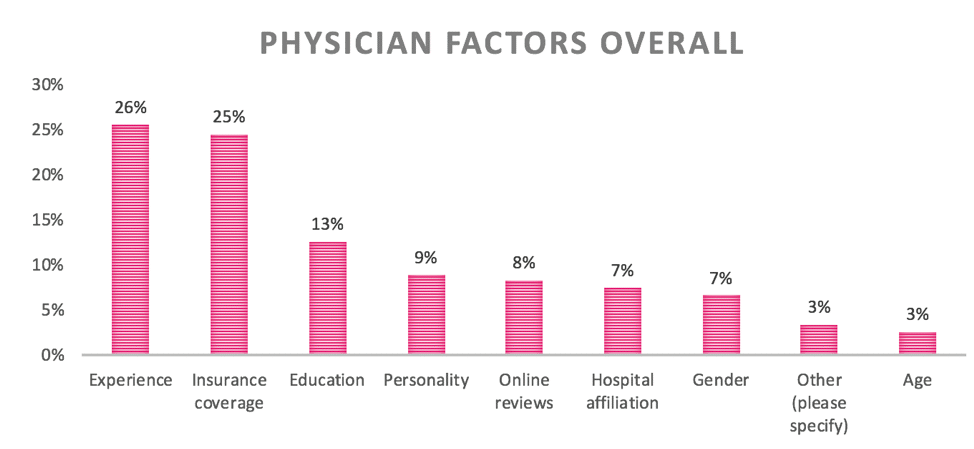
How can you use this data? Potential patients care most about whether a doctor is qualified to care for their condition. So a physician bio should include:
Since patients want proof that a doctor knows what he/she is doing, display stats and facts prominently:
Make insurance information easy-to-find from your physician bios:
Example: Seattle Children’s
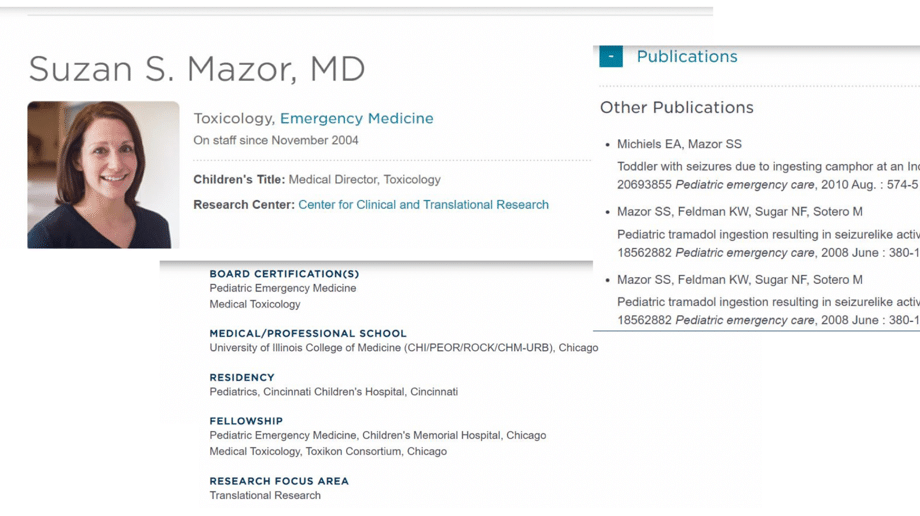
Example: Jefferson University Hospitals
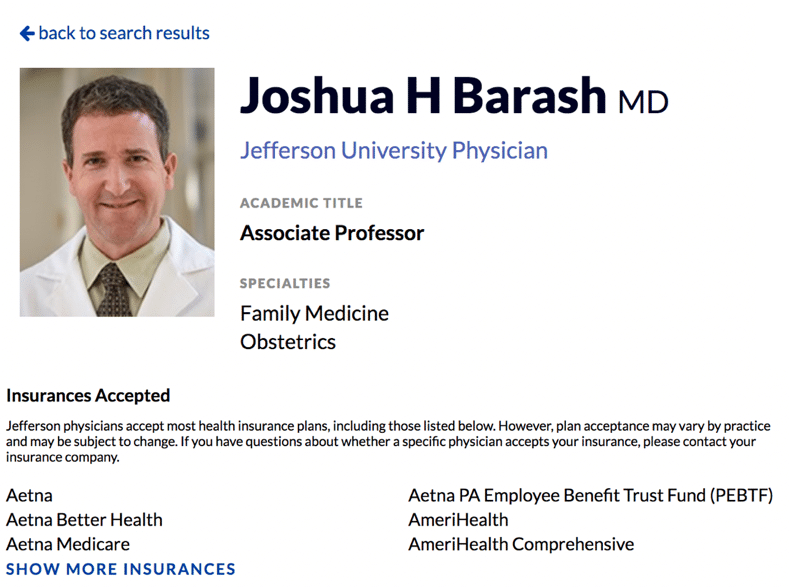
50% of people seek out photos or videos of doctors before making an appointment. Women are more likely compared to men. But most of those visual-seekers are younger: Those over age 70 are half as likely to look for visuals compared to younger age groups.
Another trend we noticed? Higher education equates to a greater desire for photos and videos. People with a doctorate are more likely to seek out visuals compared to lower education levels.
Half of all consumers seek out photos or videos of docs before making an appt. & women are more likely compared to men. #contentcreation CLICK TO TWEET
How can you use this data? According to Doximity, people view doctors with profile photos twice as often as doctors without photos. Including a photo can help new patients put a face to a name and relieve anxiety before their first appointment. But because experience and education are also important to patients, present your doctor in a professional, credible manner.
Video is another great way to go beyond profile basics and let a doctor’s personality shine through. Digital Information World reports that 90% of consumers say videos help them make purchasing decisions.
Example: Stanford Health Care

Example: Dr. Carey Andrew-Jaja Magee-Womens Hospital of UPMC
Our research shows patients are more likely to make appointments with doctors who show similar morals and values through empathy. We asked, “Which factors would make you more likely to schedule an appointment?” The responses:
44% of ages 70+ value a doctor who makes them laugh — double the amount of any other age group! So if your target audience is predominately seniors, shine a spotlight on your doctor’s funny side.
A doctor's morals/values, sense of humor, & reasons for becoming a physician are important to healthcare consumers. #hcmktg CLICK TO TWEET
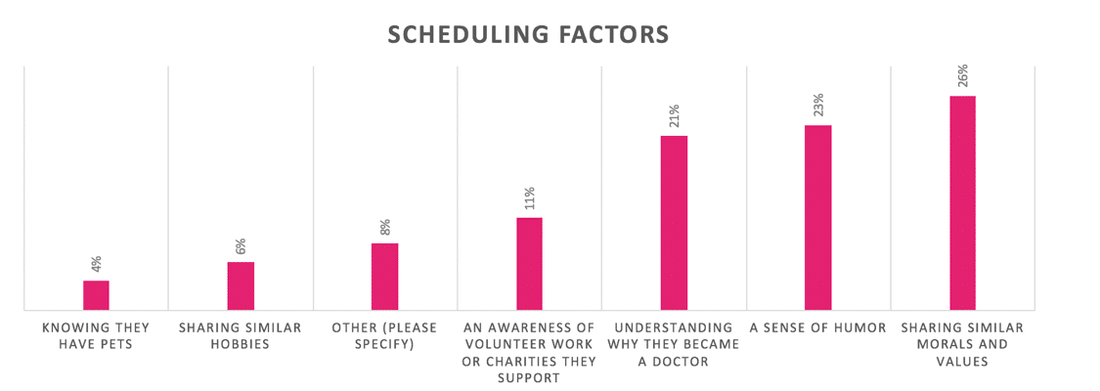
How can you use this data? The best physician profiles use quotes and conversational language. Compare these two ways of getting across a message of expertise:
Example: Firelands Physician Group
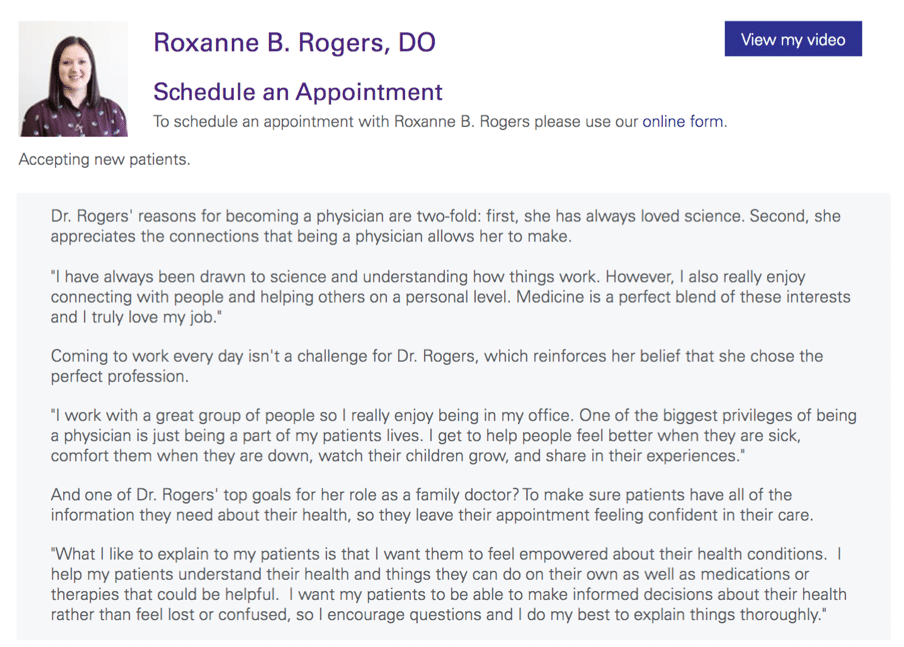
The opinions of others play a major role in how patients choose a doctor:
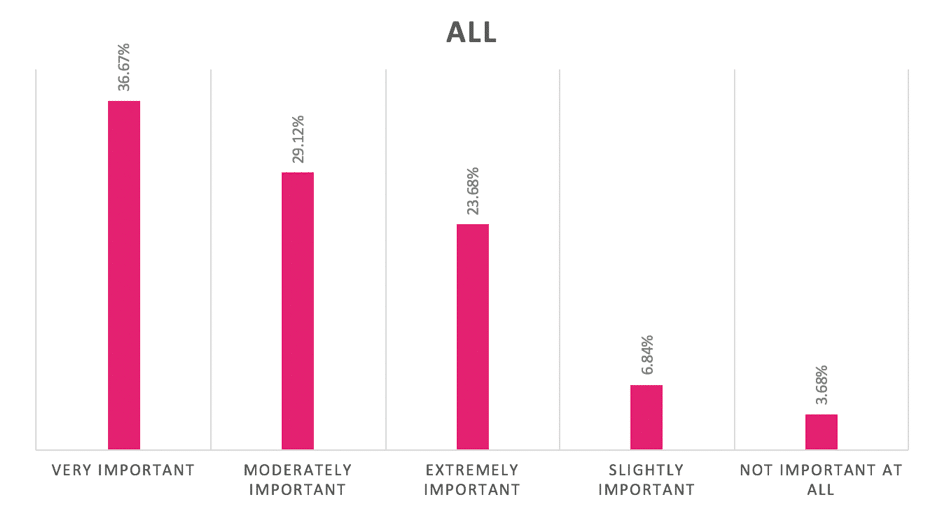
How can you use this data? Patients appreciate transparency:
Example: University of Utah Health
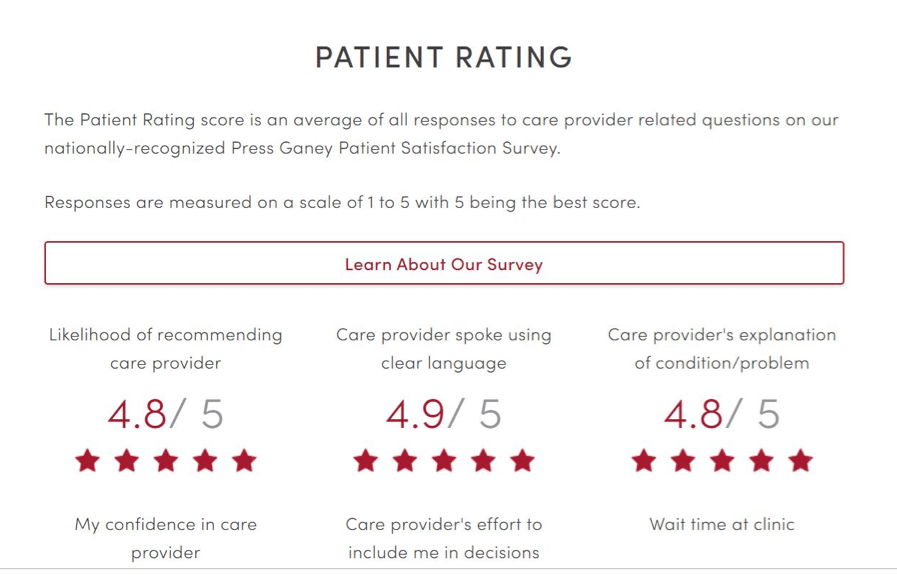
Only 6% of patients visit a hospital website directly to find information on a physician. For the best physician profiles, make sure your providers have accurate information that shows up elsewhere. Remember that 22% of patients look online using a search engine like Google — your docs should show up for relevant searches there.
Only 6% of people go directly to a hospital website to find a physician. Most use search engines, referrals from loved ones, & insurance websites. #hcmktg CLICK TO TWEET
How can you use this data? Use keywords and follow all SEO best practices to make your bio findable.
And ensure your “Find a Doctor” website tool is easy to find and use:
Example: Cleveland Clinic
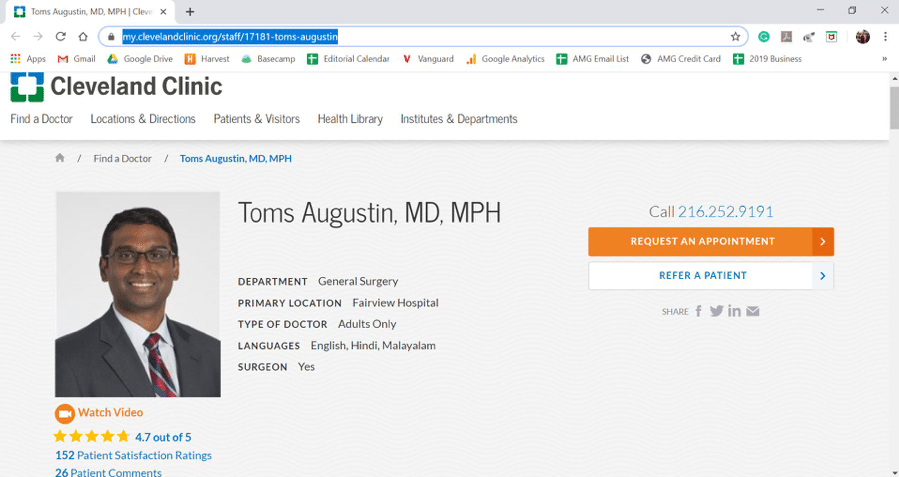
Our data found that 50% of patients prefer to schedule appointments online, while the other half still prefers to call on the phone. Not shockingly, younger patients prefer online, and older patients prefer the phone.
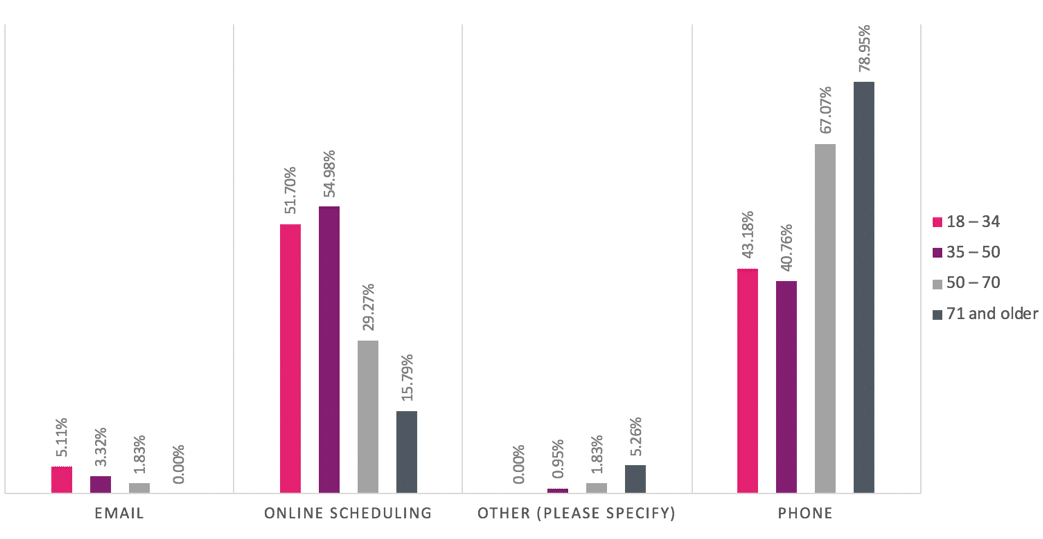
How can you use this data? Give visitors the option to both call and schedule online.
Example: Midwest Orthopedic Specialty Hospital
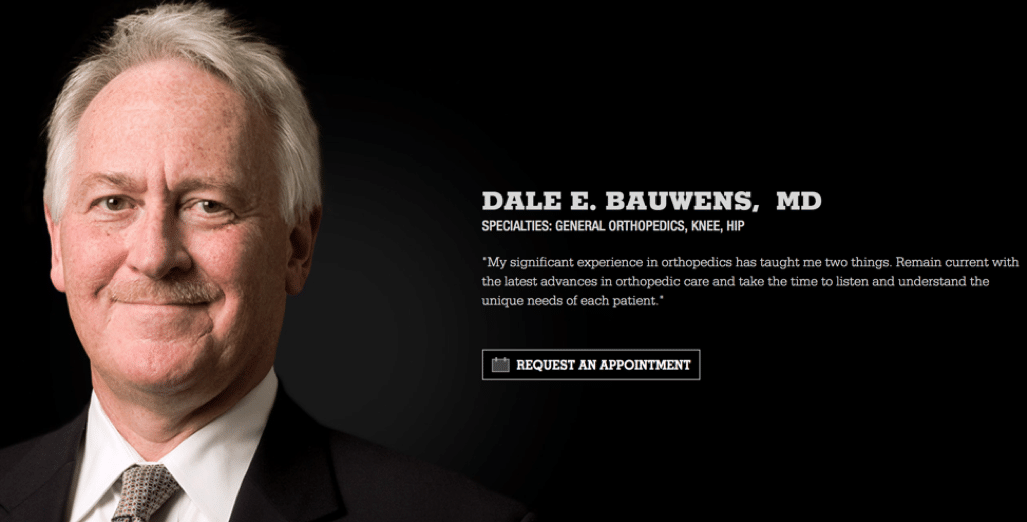
To write the best physician profiles, you have to give patients what they want. But you don’t need to guess what that is! Our survey data can guide your strategy. Focus on what matters most to your audience: experience, education, insurance coverage, visuals, online reviews and the convenience of different ways to schedule.
Patients are searching for doctors online — make sure your providers are the ones they see.
Use our checklist and survey findings of 500+ patients as your physician bio template. Our A Step-By-Step Guide to Creating High-Converting Physician Bios comes with the executive summary of our research to help you turn your doctor profile pages into appointment-making machines.
The original version of this page was published at: https://ahamediagroup.com/blog/2019/11/study-how-to-write-the-best-physician-profiles-new-data/
We’re on a mission to deliver clear healthcare content to your readers. As a healthcare marketer, you are constantly detangling the complex web of content challenges. We can help by creating strat... Read more
Everyone seems to be on TikTok, whether it’s teens seeking the latest fashions or older adults living their best lives. This social media platform is *the* place to share video ...read more
If you’ve been around the marketing block, the “SEO is dead” articles probably don’t concern you. SEO predictions are just that — predictions — and the morbid ones haven’t ...read more
Marketers want their time spent producing content to be time well spent. They want their marketing campaigns to smash goals and impress their CMOs. And yes, they want to make it as ...read more
To many marketers, SEO is a scary monster under the bed. It keeps us up at night, wondering if we’re doing enough … or if we’re doing it right … or if we’ll ...read more